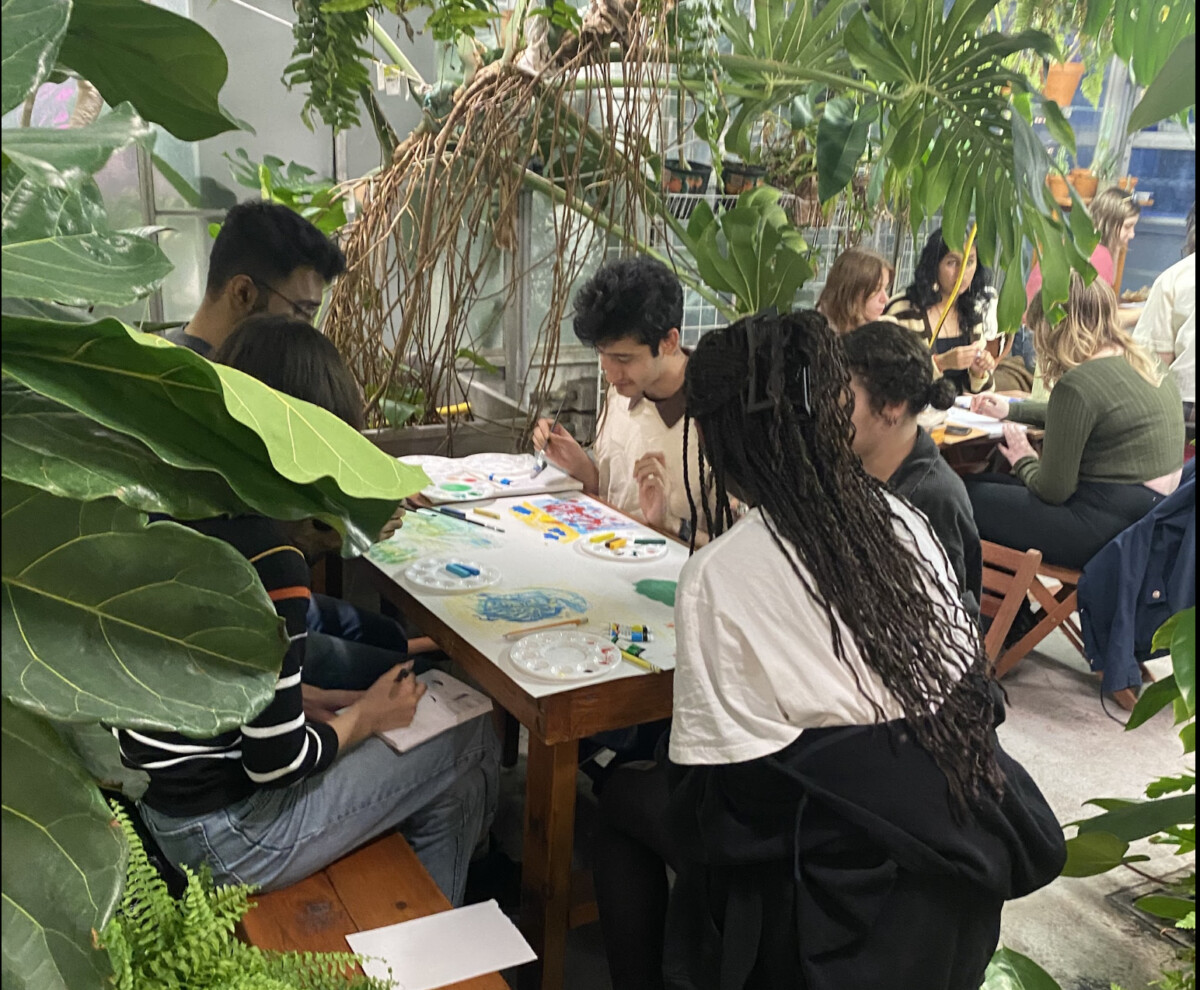FASA and CUPA teamed up to host an art therapy event for students to unwind during midterms season.
There were almost as many people as there were plants in Concordia’s greenhouse on Thursday, Oct. 19. Starting at around 5:30 p.m. in the evening, the event saw students coming to the 13th floor of the Hall building to paint, eat snacks, socialize, and relax—a much needed break during midterm season. There were many more participants than expected, and the organizers had to run to the dollar store after half an hour to buy more art supplies!
Among the greenery, students were sitting alone or in groups, painting quietly or chatting with friends, listening to music or to their own thoughts. Though the place was packed, the ambiance was relaxing and voices were quiet. The lights from the city at night were shining through the greenhouse’s glass—the location was ideal to inspire students and help them unwind.
The event was a collaboration between Fine Arts Student Alliance (FASA), Concordia Undergraduate Psychology Association (CUPA), and inARTE Journal. The inARTE Journal, an initiative of Concordia’s arts education students, had organized a student mixer and art-making event in the greenhouse in November 2022. This year, Adey Singer, FASA’s finance coordinator, brought a reiteration of it, with the goal of bringing together fine arts and psychology students.
Singer was inspired by her friends in the psychology program who love arts, but don’t have many opportunities to participate in artistic events on campus. She wanted this to be an occasion for students of all departments to express their creativity and meet people from other programs. “It’s a social event where people can gather, meet each other, make social connections, make art together, and relax,” explained Singer.
Emily Chodat, president of CUPA, also attended and helped organize the event. “We believe that psychology and creative arts are super interconnected,” she said. “Being able to express artistically how you’re feeling can be really relieving on your mind.”
Aimée Lebeau from inARTE Journal was there as well to “offer guidance and mediate the event,” as was stated on FASA’s Instagram page.
Singer, Chodat and Lebeau were pleased with the turnout and called the evening “a great success.” The event might be a tradition in the making—considering how popular this year’s edition was, it is possible that those who didn’t get the chance to drop by on Oct. 19 will get another chance next year.
